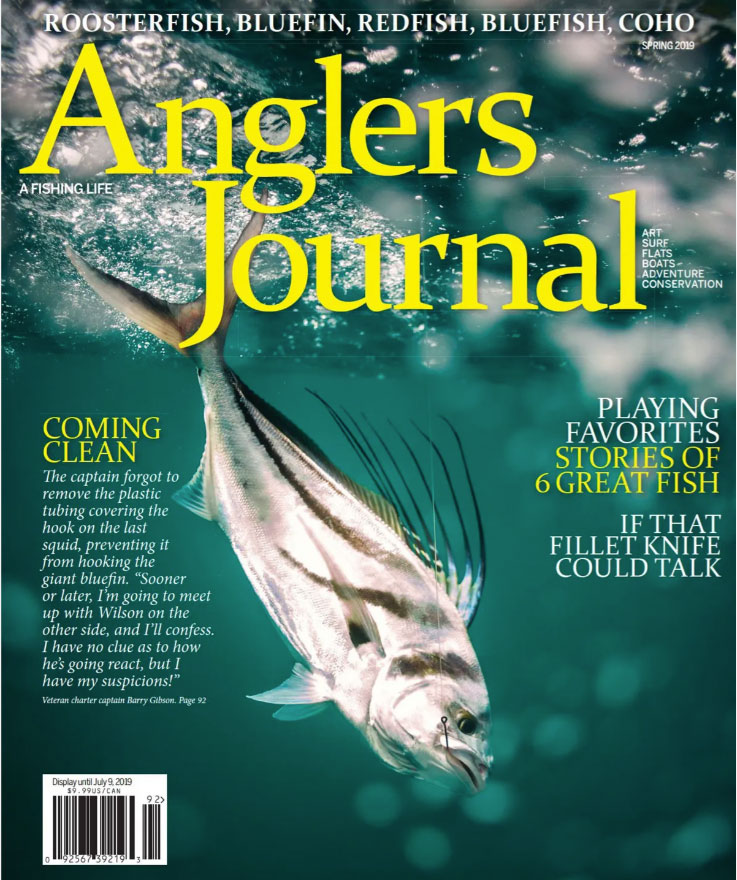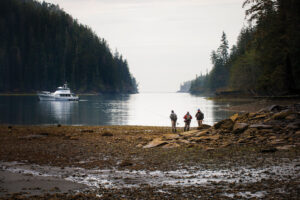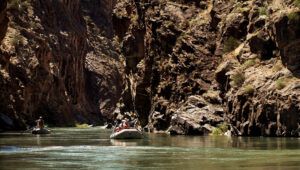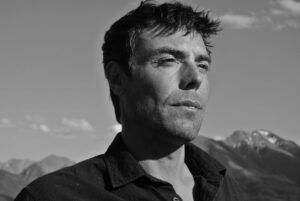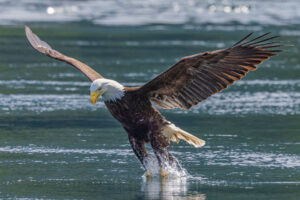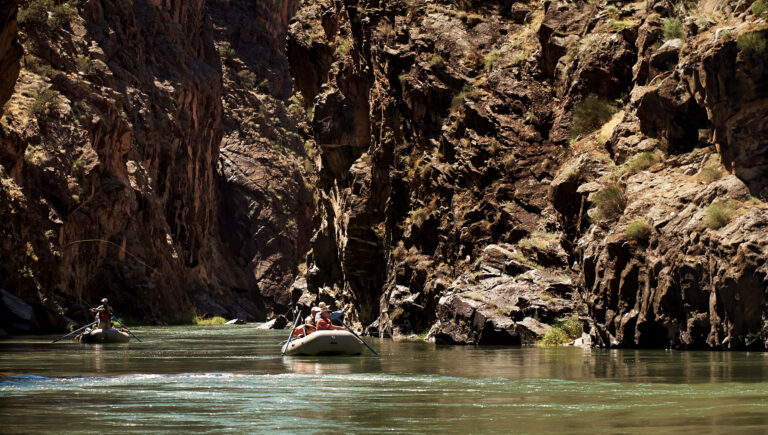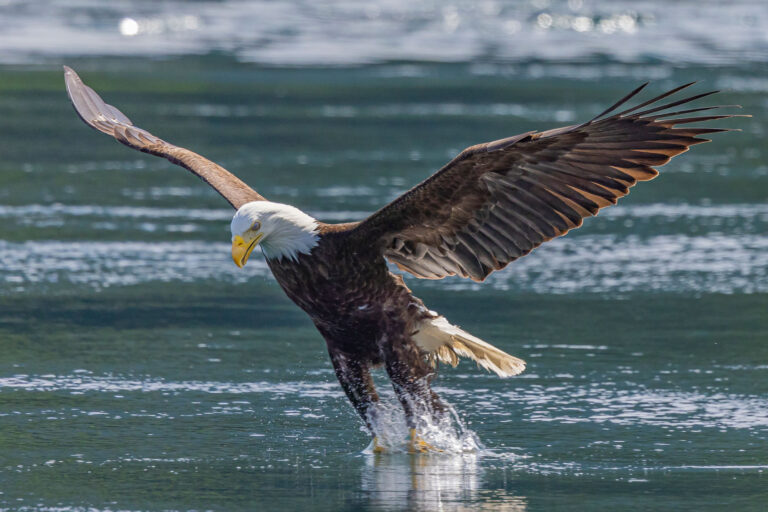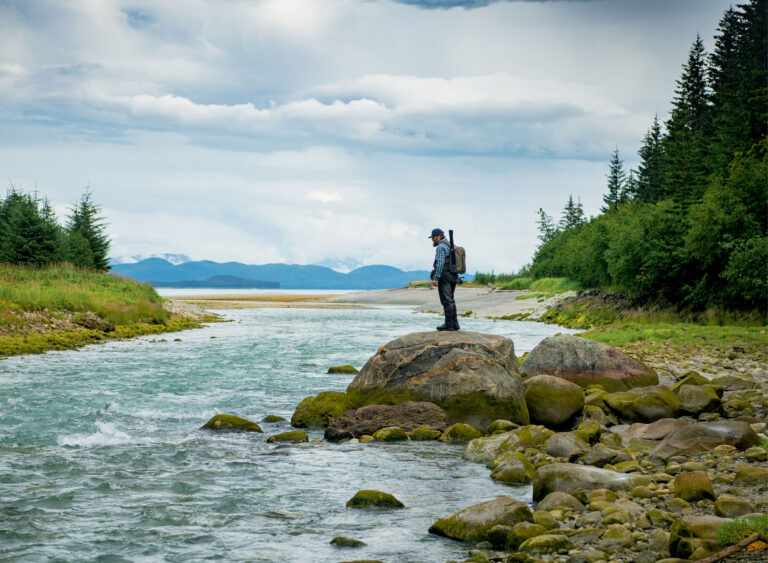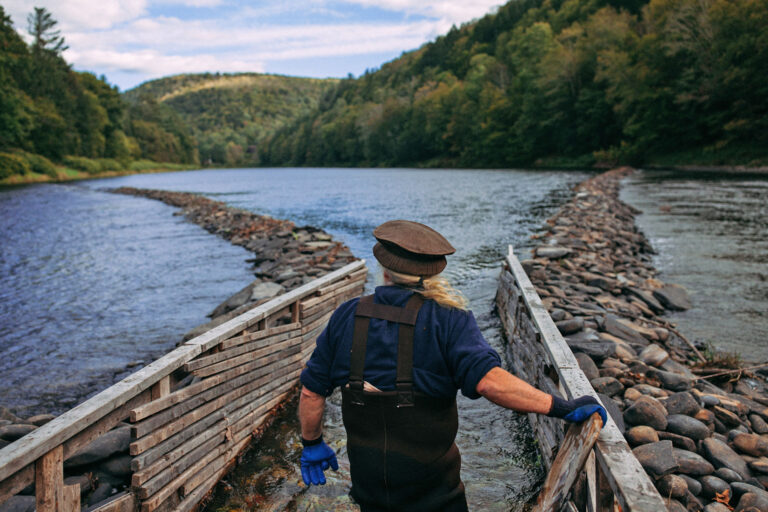Turtle-shelled by two backpacks and with a four-piece rod in my free hand, I set my mind to Isle of Skye browns and not the armpit I faced in the London Underground. If there was an art to nonchalance, I had not mastered it.
I had come to the United Kingdom to visit my brother, who at the time was a conflict-management and peace-building specialist for war-torn areas. Glen had spent only three of the preceding 90 nights in his rented London bed, the remaining divvied between East Africa and the Middle East. Three days prior to my arrival, Manchester was bombed: 23 fatalities, 119 injuries. This was Glen’s world, a world of attacks and strategic response; lockdowns, evacuations and hostile-takeover training. Riding the Tube from Heathrow Airport, he told me whom he’s trained to be: a Gray Man, inconspicuous in dress and behavior, a tactical apparition and, in essence, the opposite of me. I was ruddy-cheeked in magenta merino and a floral scarf, schlepping odd-shaped luggage. Attuning to the shifty crowds and armed bobbies, I leveled my own anxiety by ruminating about whether or not I would hold a trout in hand.
This trip was tripartite: a stint in London (allowing Glen, finally, an excuse to learn his metropolitan base camp), a jaunt to Edinburgh, Scotland, and a flash trip to Skye, the largest island in the Inner Hebrides. I eked out a single day to fish, the pressure of which mounted the closer we edged to the 57th parallel. While I could have begged for more time on the water, I knew Glen needed the vacation more than I did, and he’s a birder, not an angler. Our last time together of significance had been 18 months prior, during my visit to Kenya, while Glen vacationed from his duties in South Sudan and added 77 species to his growing eBird account.
After a few days of sightseeing, bottles of rosé and jabs at the London skyline — the phalli of the Shard and the Gherkin — we boarded a speed train to Edinburgh. We had lived there briefly as children when my father exchanged jobs with a Scottish ombudsman, and we traded our cedar-paneled Alaskan home for a three-story townhouse. Now back in the Gothic capital, I had only a handful of hours to procure flies for Skye. The Orvis shop just off Princes Street was manned by two older women, and one of them recalled pattern recommendations from her son, who fished the bank holiday away on Islay, another Inner Hebrides island. Afterward, Glen and I steeped in the haunting familiarity as we walked the Merganser-dotted canal, eventually stopping in on an old neighbor, Pete White. Our encounter was a bittersweet downloading of lives drifted 30 years apart.
“I spent a year in the care of the Queen,” Pete reminded us, regarding his prison sentence nine years ago for embezzlement. Though his trademark is to lace every spoke of conversation with humor, he dropped it to make a final point. “I went in as an architect and emerged a human being.”
He plied us with Macallan, setting a small pitcher of water to the side. “Dad said you put six drops of water in scotch,” Glen said.
“He believed me?” Pete said with a laugh. “I was just bullshitting him.”
In Pete’s flat, we navigated photography equipment and bicycles hung on the wall as if art, then pored over the road map of the North Coast. While Pete marked our route with a pencil, I picked up a first-edition copy of The “Contour” Road Book of Scotland. The roads we would be traveling were described in the book more than a century ago as “wretched, abominable, precipitous” and just plain “bad.” Pete was more encouraging but reminded us that certain passes were single-track, and it would take a handful of hours to travel 100 miles. Glen and I picked up a Kia Picanto the next morning, and while he expertly managed the left-hand gearshift, I cursed Google Maps for its insistence that we enter roundabouts on the right.
 Brown trout were elusive in Scotland’s wind-strewn lochs.
Brown trout were elusive in Scotland’s wind-strewn lochs.We paused in Pitlochry long enough to make eyes at the River Garry before proceeding north past the scoured Scottish Alps, the Cairngorms. Heading west out of Inverness, my mood soured, a slurry of agitation fueled by the thrill of seeing trouty waters and the pressure to execute my portion of the adventure.
I’d spent the winter on a losing streak, skunked on high-risk, high-reward days. I fished through illness, injury and graupel looking for winter-weight rainbows fattened by dam-chopped kokanee in northwest Montana. During the spring runoff, I hooked and lost a fish while being filmed for a conservation documentary. I also spent two Sundays harassing trout in a dredge pond to the sound of a rancher’s rifle. My confidence had taken a beating, but my thirst was finally quenched when, a week before takeoff, I caught a handsome 20-inch brown in southwest Montana, where I’d gone to rehearse loch fishing. I knew I needed to learn to contend with the elements of exposure, a notable departure from the ponderosa-lined freestone streams nearest my home, where I relied on the foliage for cover, the current for variable holds and music.
Prior to the trip, I had been warned that U.K. trout waters can be difficult to access because of privatization, a word known to cause an allergic reaction in Montanans. Abroad, it seemed that freshwater angling required a highly specified and spendy permit and/or the accompaniment of the angler’s ghillie, or guide. As it turned out, all the guides on Skye were booked that weekend, but to my relief, purchasing a permit was surprisingly simple. Courtesy of the isle’s local angling club, all that was required was 15 Scottish pounds and one riddle quest.
It was a rare, bright day on Skye when I walked into the rubber-thick cologne of Portree’s only bicycle shop, also the isle’s makeshift fly shop. I politely asked the man hunched over a small desk for a permit.
“Where do you plan on going?” he asked, belying interest.
“I was hoping you could tell me that. Where can I go?” I replied.
“I’m going to turn the question back on you,” he said, growing prickly. “Where did you want to go? Because that will dictate if I can help you or not.”
I recognized the test, a commonplace experience in the “girl walks into a fly shop” comedy where beauty and charm are surprisingly impotent currencies. I referenced my desire for loch-bound browns, not sea trout, not salmon. Upon hearing my request for “remote,” the shopkeep thawed, pulled out a map and pointed to a handful of lochs under the local angling club’s jurisdiction, from roadside mammoths to hidden pockets up steep footpaths. He pulled out the permit paper, wrote my first name followed by a period (no proof of identity required), then sent me up the street to the mountaineering store for an identical map. I was reminded that maps are more helpful than humans.
A Gray Skye
“You’re going to need a priest,” Pete said in his solemn brogue, having phoned that night to ensure Glen and I had managed the roads.
“To pray for me?” I muttered.
“To dispose of the fish. A thick branch or decent stone will do. Hit it hard behind the gills,” he instructed.
I lolled on top of my sleeping bag, my brother’s phone to my ear. “I release them,” I reminded him and passed the phone back to Glen.
“If the midges are bad, just put a bag over your head,” Pete offered.
“A plastic bag with no holes,” my brother improvised, then pressed Pete for the forecast.
“Mizzle in the morning, raining harder after 9 a.m.”
Glen hung up and translated the report as mist and drizzle, emphasizing the day’s quick deterioration.
Gray-bellied clouds slung low over the eastern hillscape of Skye when I stepped outside at midnight to gauge the wind. Its patterned gusts woke me, along with the sting from the day’s sunburn. Nearing the summer solstice, the light was still ambient and disorienting. I stood in the gloaming, offering a medley of plea and prayer to a maturing sky. I wasn’t opposed to fishing in the rain; I just didn’t have the gear. I was also relying on my brother for transport and good sportsmanship. So long as we could make the occasional birding stop and end the day at the distillery, he claimed to be on board.
 The author’s brother, Glen, is an avid birder.
The author’s brother, Glen, is an avid birder.Songbirds signaled true dawn at 3:48 a.m. Glen’s earplugs and silk eye mask kept him under for three more hours until I jostled him and we headed out. The first stop was a nearby loch; my brother unfastened the rope securing a herder’s gate in the long fence line. We moved toward the shallow southern inlet. Despite being treeless, the landscape offered a dense carpet of shrubbery. Glen scoped wagtails and reed buntings while I tossed out an olive bugger, stripping fast through wind-licked water.
I spent the first hour working counterclockwise around the bank, jumping over ditches and managing the persuasion of wind. To the east, the Sound of Raasay split us from the distant hills of Applecross. To the north loomed the volcanic pinnacles of The Storr, one of the most widely photographed sites in the world. Only three cars passed. When the wind and rain picked up, I suggested we move on. Was I wrong to begrudge the loch for leaving me troutless when all I had to do was behold the landscape? If ever there were a consolation prize, the singular spike of The Old Man of Storr would be it.
‘Ten More Casts’
Applying the Gray Man mentality to fishing is a given. Our task as anglers is to slip into the background and become imitators. On the ride to the next set of lochs, I reviewed my failings. Was my jacket too loud? Had my slip that broke mud from the cutbank sent cruisers farther out? Should I have rotated my cast of flies? I thought of my brother, moving around me, adroit and silent in black, collecting data for his enviable online birding accounts, now referenced as one of the “Top eBirders in Afghanistan.”
The next loch looked good. I followed a path to the water, sheep pellets underfoot. Several small inlets contoured the shore, and the dry-stone wall of a field boundary dissected it. A brief break in weather allowed the song of an unseen cuckoo to hang over the basin. The sepia water felt hand-warm in the wind. Stripping my first cast, I realized the black bugger I’d switched to was locked into a fingerling so weightless it nearly caught a free ride into my next backcast. I held it admiringly, its tail barely curling over my palm. Working around the loch resulted in six more hits, four in hand, each slightly bigger than the previous.
The streamer was perfectly seductive, and the fishing was hot when the weather turned: bursts of wind, drizzle morphing to blirting rain. Had I been a woman possessed, or simply alone, I would have stripped my shoes and socks, rolled my pants over my knees and waded to the boulder a few yards out. I wanted to know what held in the dark center of the loch, this same region where paleontologists had recently dug up the remains of a 170-million-year-old predator — something of a beaked sea monster. I looked toward my brother ambling the bank, rain beading on his jacket and brown leather boots. He was running out of bird sightings. This is the difference, maybe, between passion and obsession. Passion considers another; obsession only includes one.
“Ten more casts,” I said, my ritual for prying myself off the water. I made 15 and returned the hook to its holder. We hiked to the lower loch, where I summoned the biggest brown of the day, a meager 8 inches, my line coiling around tendrils of emerald bracken fern. The rain came down with greater insistence, and I gladly called the day, relaxing for the first time since being served white wine by stewardesses 30,000 feet over the North Pole.

The Talisker distillery was overflowing with fair-weather vacationers when we rolled into the nearby harbor parking lot. I bought a sample pack from the gift shop, and Glen drove us back to camp for the ceremonial lighting of incense and nips of Talisker Storm.
The next day we drove back to Edinburgh and caught an evening flight to London. A professional traveler, Glen relies on utility luggage fit for special forces, and he has learned how to strap small bags to his belt loops with carabiners, in effect passing four carry-ons for two. He wore an army-green oilcloth jacket over a chambray and jeans. I mimicked him in a black merino hoody and my own muted jacket, my best Gray Man impression.
The next night, pedestrians were mowed down on the London Bridge two stops over from where we rode the Tube. Sleep came in fits. The next morning, before my flight, Glen researched London’s history of terror attacks, focusing on a selection of Irish Republican Army bombings from the 1990s — his attempt to reassure me that the city would operate, business as usual, and its people would recover.
Road-weary, Glen readied himself to return to work, but not before adding herring gull, great cormorant and mute swan to his U.K. Year List. I packed my rod, a new selection of Scottish flies and the remaining mini-bottles of scotch. Back in the Underground, I contemplated wonder as antidote to terror, and whether playing Gray Man on the water was a justifiable apprenticeship — the luxury of reeling something up from the underworld, admiring it in hand and sending it back.
This article originally appeared in the Fall 2019 issue of Anglers Journal magazine.
Subscribe to Anglers Journal here ▶

